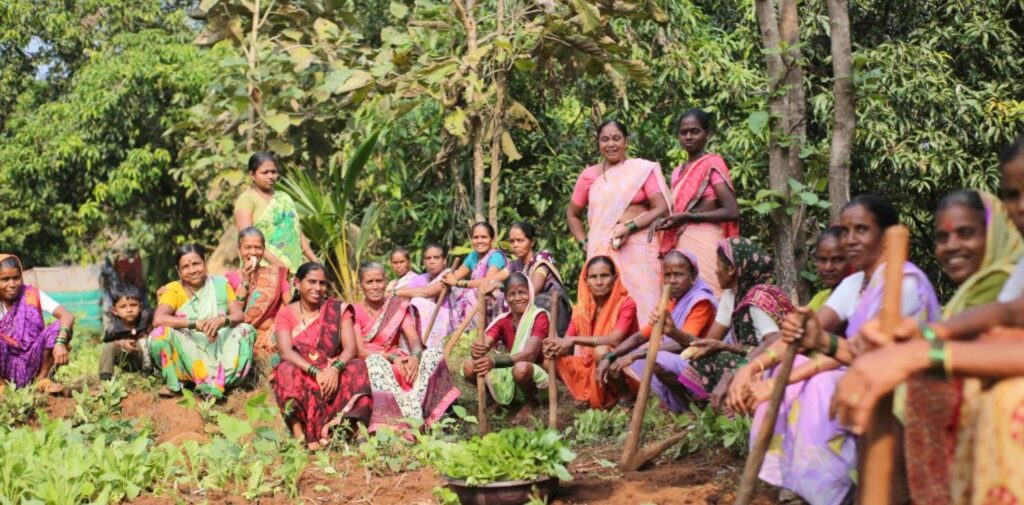India rural economy has undergone significant transformation since the year 2000, marked by a blend of growth, challenges, and emerging opportunities. With approximately 65-70% of India’s population still residing in rural areas, the rural economy remains the backbone of the nation. In the years following 2000, several factors have influenced the evolution of the rural economy, including policy changes, technological advances, globalization, and socio-economic reforms. While there has been growth, rural areas still face substantial challenges that need to be addressed for balanced and inclusive development.
The Rise of Agricultural Productivity and Technological Integration
One of the most significant changes in the rural economy post-2000 has been the improvement in agricultural productivity. The Indian government introduced several measures to boost agriculture, including the implementation of schemes like the National Rural Employment Guarantee Act (NREGA) and increased subsidies for farmers. These programs aimed to provide financial security to farmers, enhance irrigation infrastructure, and promote the use of technology.
In addition to these government schemes, technological advancements have played a crucial role in improving agricultural productivity. The use of better seeds, fertilizers, and irrigation techniques has led to higher crop yields. The spread of mobile technology has allowed farmers to access market information, weather forecasts, and expert advice, making agriculture more efficient and profitable.
Moreover, the introduction of precision farming and the use of drones and satellite imagery to monitor crop health have also become increasingly popular. Farmers in rural areas are now able to make more informed decisions, which helps reduce crop loss and increase overall productivity. However, the adoption of these technologies is still limited in many areas, and there is a need for more education and resources to make these tools accessible to all.

Rural Employment and the Shift Towards Non-Agricultural Sectors
Over the past two decades, there has been a gradual shift in rural employment from agriculture to non-agricultural sectors, including manufacturing, services, and trade. While agriculture remains the primary source of livelihood in rural India, the rural economy has diversified significantly.
Small-scale industries such as food processing, textiles, and handicrafts have flourished in rural areas, providing an alternative to traditional agricultural employment. The government’s initiatives to promote rural industries, such as the Make in India campaign, have helped boost employment in rural areas. Additionally, the rise of the digital economy has also created new opportunities, with many rural youths opting for online work, freelancing, and e-commerce businesses.
The National Rural Employment Guarantee Act (NREGA), introduced in 2005, has had a lasting impact on rural employment. It provides a minimum number of days of employment to rural households, thus helping alleviate poverty and providing income security. The act has created infrastructure like roads and canals, which have further supported economic activities in rural areas.
Improvement in Rural Infrastructure and Connectivity
One of the key factors driving the growth of India rural economy post-2000 is the improvement in rural infrastructure. The government has focused on building roads, providing electricity, and improving telecommunication networks, which have brought rural India closer to urban markets. The expansion of rural roads, in particular, has enabled farmers to transport their goods more efficiently, reducing costs and opening up new markets for their produce.
Additionally, rural electrification programs have enhanced the quality of life in villages by providing power for lighting, irrigation, and small industries. This has led to increased productivity, better education opportunities, and improved health outcomes. The rise of mobile phones and internet access has also connected rural communities with the rest of the world, providing information, entertainment, and economic opportunities.
However, while there has been progress in rural infrastructure, challenges remain. Some areas still lack basic facilities like good roads, reliable electricity, and clean drinking water. Rural infrastructure development is uneven, with certain regions lagging, which affects the overall growth of the rural economy.

Access to Credit and Financial Inclusion
Access to credit and financial services has been a major challenge for rural India in the past. Farmers, artisans, and small entrepreneurs in rural areas often faced difficulty in obtaining loans or financial support due to lack of collateral or formal credit histories. However, with the introduction of schemes like Pradhan Mantri Jan Dhan Yojana (PMJDY), the situation has gradually improved.
Under PMJDY, millions of rural households have gained access to banking services, including savings accounts, credit facilities, and insurance. The government’s push for financial inclusion has helped reduce the dependency on informal money lenders, who often charge exorbitant interest rates. In addition, the establishment of microfinance institutions (MFIs) and rural banks has supported small-scale entrepreneurs and farmers by providing them with easy access to credit.
Moreover, digital financial services like mobile banking and e-wallets have enabled rural people to carry out financial transactions with ease. The growth of online payment platforms has also encouraged entrepreneurship, allowing rural businesses to access national and international markets.
Challenges Faced by Rural India: Income Inequality and Migration
Despite the growth seen in India rural economy, there are several challenges that need to be addressed to ensure sustainable and inclusive development. One of the most significant issues is income inequality. While some rural areas have prospered, others remain stuck in poverty due to a lack of resources, poor infrastructure, and limited access to markets.
The income disparity between rural and urban areas is also widening, with urban centers experiencing higher rates of economic growth. Many young people from rural areas are migrating to cities in search of better employment opportunities, leading to the depletion of the rural workforce and a strain on urban infrastructure. This migration has contributed to the growth of informal settlements in cities, where migrants often live in substandard conditions.
Agriculture continues to face numerous challenges such as erratic rainfall, land degradation, and insufficient support for small farmers. The rising cost of inputs like seeds, fertilizers, and pesticides, coupled with low returns on agricultural produce, has left many farmers struggling. The agrarian crisis, which has led to farmer suicides in some regions, remains a critical issue that requires urgent attention.
Additionally, the rural economy is highly dependent on the monsoon season, making it vulnerable to climate change. In recent years, frequent droughts, floods, and changing weather patterns have affected agricultural production and led to economic instability in rural areas.

The Way Forward: Sustainable Development and Rural Empowerment
India rural economy has come a long way since 2000, but there is still a need for comprehensive reforms to address the challenges that persist. To ensure the long-term prosperity of rural India, there must be a focus on sustainable development. This includes promoting organic farming, water conservation, and eco-friendly agricultural practices that will help preserve natural resources for future generations.
The government and private sector must also work together to enhance rural infrastructure, ensuring that all regions have access to reliable roads, electricity, and digital connectivity. Rural education should be given priority, as it is the key to unlocking the potential of the younger generation and creating a skilled workforce.
Further, there is a need to strengthen social safety nets and provide better support systems for farmers and rural entrepreneurs. Affordable credit, insurance, and market linkages will help farmers weather economic challenges and boost rural entrepreneurship. Addressing the challenges of migration by creating jobs and opportunities in rural areas will be key to reducing the pressure on urban centers.
Conclusion: India Rural Economy
India rural economy has made notable progress since 2000, with improvements in agricultural productivity, employment diversification, infrastructure, and financial inclusion. However, significant challenges remain, including income inequality, rural-urban migration, and the vulnerability of agriculture to climate change. To secure the future of rural India, the focus must be on sustainable growth, equitable access to resources, and the empowerment of rural communities. The rise of India rural economy is a critical aspect of the nation’s overall economic growth, and continued efforts will help bridge the gap between rural and urban areas, ensuring that all citizens benefit from India’s development.




